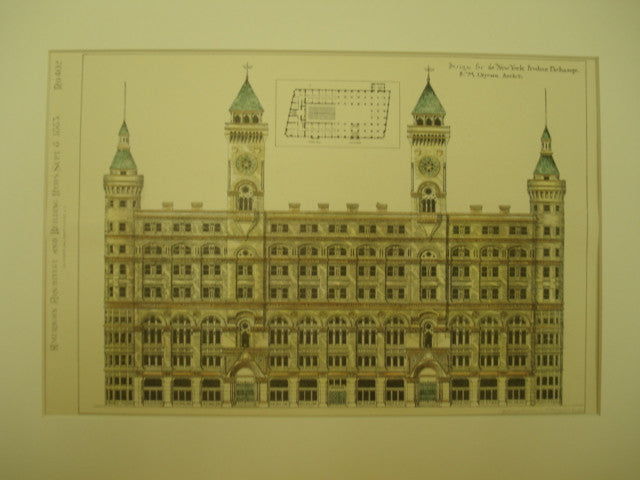News
Times Change in 1883 August 19 2015
This is the eighth installment in our series of posts comparing significant events from a year in United States history with a few of our unique architectural plans from the same period. 1883, the topic of this installment, subsequently marks the eighth year of the American Architect and Building News' existence.
Click on the pictures to find the plans below in our store!
On May 24 of 1883, the Brooklyn Bridge in New York City opened to the public after 13 years of construction. The bridge connected Manhattan and Brooklyn, stretching over a mile across the East River. Just six days after it's opening, a stampede on the bridge occurred over rumors of the bridge's collapse, causing 12 people to be crushed in the resulting chaos. This design for the New York Produce Exchange by R. M. Upjohn would have been located nearby in Manhattan, and any Brooklyn or Long Island producers would now have an easy way to reach it and sell their wares. Upjohn is well-known for his Gothic Revivalist style, spurring the movements popularity in the country.
November of 1883 brought along the founding of universal time zones throughout the United States. The idea was put forth by the U.S. and Canadian railroad companies as a better means for planning arrivals and departures for their trains. Though the boundaries for the zones looked much different than they do today, the establishment of these ended much confusion throughout the nation with regard to scheduling. This combination United States Court House and Post Office designed by Jas. G. Hill in Quincy, Illinois would have benefited much from the zones' creation, as the Postal Service would have had a much easier time keeping their schedule.


